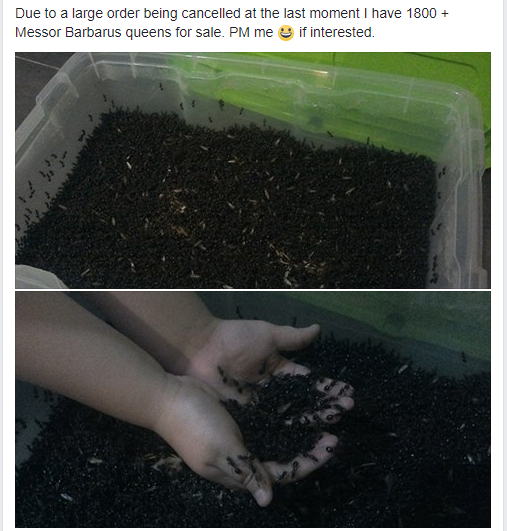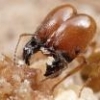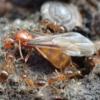Perhaps I am mistaken but I believe that our very own gcsnelling posting in this thread telling you not to release ants is a Myrmecologist. I suspect batspiderfish may be as well though I don't know for sure.
Speaking of self-serving justifications, thank you for demonstrating exactly my point by citing that antscanada advertising page as though it is in anyway authoritative.
I'm pretty sure I trust the word of Antscanada more than yours, not sure why you think your opinion is worth more than his?
At any rate, this whole debate ended up just boiling down to the following:
Person against releasing: "You shouldn't because you can give wild ants diseases."
People for releasing: "You don't have any evidence to support that."
Person against releasing: "Well, it happens to animals. Look at this study!"
Person for releasing: "But that's not an insect. That doesn't prove anything in this argument."
Person against releasing: "Well you're just irresponsible and I can't even believe you'd take a risk like that."
Basically, we're just asking for proof - and then when no one comes up with any proof and we don't change our views you guys are just ridiculing us because "it should be common sense"... pretty ridiculous. Just because you think something and are able to justify it with your own head canon doesn't mean you're right.
If you're not willing to understand that we can look at examples with other types of animals and desire to prevent the same thing happening with ants by applying sensible precautions then there's no point in trying to convince you.
I look forward to the day when some antkeeper somewhere does something stupid enough to attract enough legal attention to cause regulations to be put into place that significantly restrict the freedom of people to keep ants because at least then there will be something to check the torrent of careless stupidity that the hobby produces.
Except for the fact that insects are completely different from other animals like turtles, seas horses, etc. I completely understand we can model certain things based off of other things, a great example being lab mice and people. The issue is that you can't compare insects to other animals and use them as a good model against each other. It's not sensible to compare the two and believe they'll have the same consequences. If you can provide an example of this happening to another insect species, then you have some ground to stand on but otherwise you don't have any relevant proof for me to agree with your statement.
If you can justify why you think turtles, sea horses, etc. are a good model to compare against ants or insects in general, then I'm all ears.
























